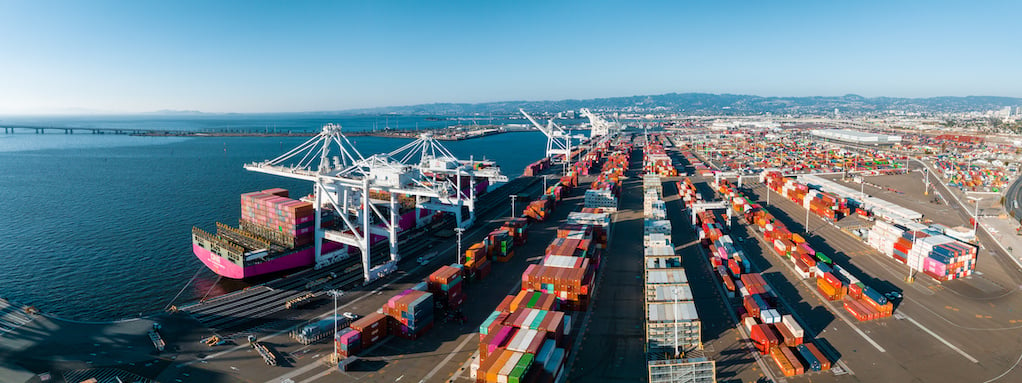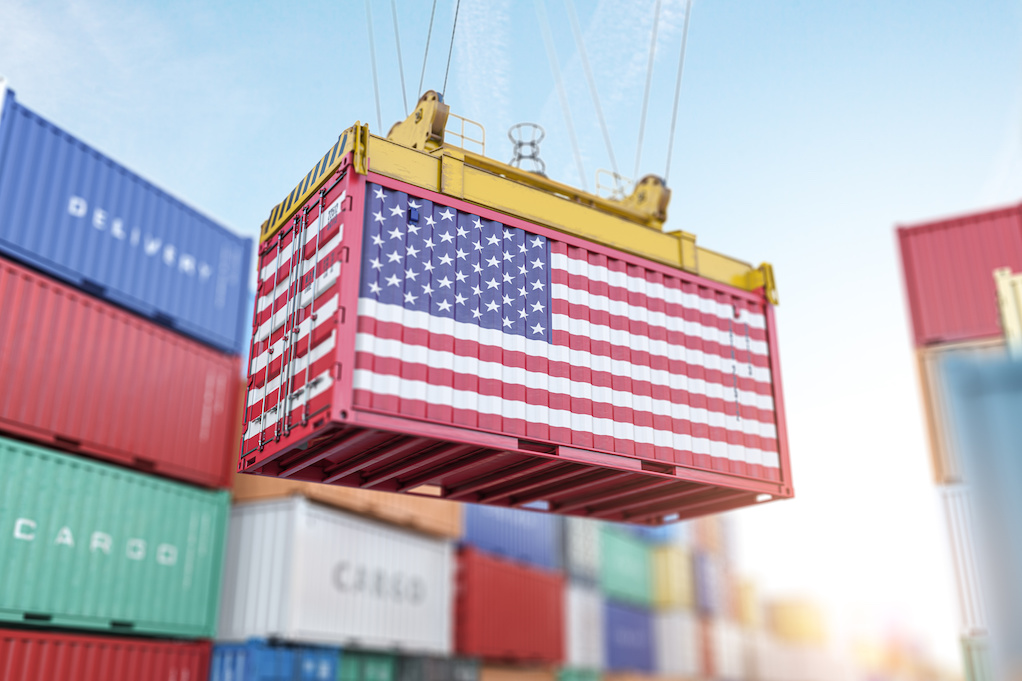In this article, you'll learn:
- How onshoring is increasing demand for industrial space in the U.S.
- Factors driving the onshoring trend, including cost and supply chain resilience.
- The impact of onshoring on industrial tenants and their opportunities.
- Expected changes in industrial space availability and leasing dynamics.
In the rapidly changing landscape of global manufacturing, onshoring has gained prominence as businesses rethink their strategic efficiency and adapt to evolving challenges.
Factors like escalating offshore production costs, supply chain disruptions, and the pursuit of greater control have fueled the onshoring trend. As a result, the demand for industrial space has surged, driving industrial development across the country. In this article, we explore how onshoring affects the industrial space sector and its implications for businesses navigating the changing manufacturing landscape.
What is Onshoring?
Onshoring refers to the process of bringing business operations and manufacturing back to national soil from overseas facilities and workforces. And right now, it’s happening on a mass-scale because a post-Covid model, Americans understand how vulnerable the vast majority of our supply chains are.
Geopolitical factors, trade tensions, and disruptions caused by events like the pandemic have highlighted the risks associated with relying heavily on overseas production.

As a result, companies and governments are reevaluating their supply chain strategies and considering onshoring as a means to reduce dependency, increase resilience, and capture the benefits of local production.
Why is Onshoring a More Common Solution?
COVID disruptions reasserted the need for companies to think strategically about how the locations in their portfolio affected their bottom line. This is true when it comes to any leg of commercial real estate, from office space and retail to hospitality and industrial.
And while industrial maintained relatively high demand through the last few years as other asset classes faltered, it’s not immune to an evolving landscape. There's still a lot of factors to consider when identifying the optimal solution for your industrial portfolio. Enroll in the free course below to get the ultimate warehouse checklist and learn how to find the best warehouse for the best price.
While onshoring isn’t necessarily a cheaper option, it does relieve a great deal of other tension.
Onshoring offers an improved supply chain resilience, reduced shipping costs, faster turnaround times, better quality control, and the ability to tap into local talent and innovation. It also quells the uncertainty of navigating trade in a time of political unrest and how it influences the price of key features like fuel. This of course is very appealing to investors and industrial manufacturers.
While companies once embraced offshore manufacturing and just-in-time deliveries, recent years have revealed the flaws in this approach. The need for a more integrated and resilient model has become apparent, emphasizing the importance of proximity and responsive supply chains.
Capitalize on a Changing Landscape with Onshoring
New definitions of convenience stemmed from the rise of e-commerce have also emphasized the need for more local operations. And onshoring may provide those who practice it a leg up on the competition. Manufacturers can reduce transit times, shipping costs, and logistical complexities, enabling them to meet the growing demand for fast and reliable delivery.

Additionally, advancements in technology, automation, and logistics have made domestic manufacturing more cost-effective and efficient, further driving the onshoring trend. It also aids in the corporate sustainability initiative in an environment where green restrictions are becoming far more commonplace.
|
“You can’t have a small carbon footprint with a long supply chain.” -Schneider Electric’s chief procurement officer, Dan Bartel. |
Onshoring is Driving Up Demand for Industrial Space
Now, it’s being predicted that the growing trend of onshoring will dramatically drive up the demand for warehouse space in the USA.
As companies increasingly opt to onshore their operations, the demand for industrial space experiences a notable surge. This is driven by the need for suitable facilities to accommodate manufacturing processes, storage of raw materials and finished goods, distribution networks, and other related activities.
|
More than 1,800 companies reshored their productions last year. -according to a report from the nonprofit Reshoring Initiative. |
Industrial spaces, including warehouses, factories, and distribution centers, play a critical role in supporting onshoring efforts by providing the necessary infrastructure and operational capabilities.
But of course, as always, there are also regional factors at play. Demand is expected to notably spike in certain areas rather than ripple throughout the whole nation.
To capitalize on the growing demand for industrial space resulting from onshoring, developers and investors are strategically focusing on developing or acquiring suitable properties in key locations. Read about Emerging Industrial Markets.
These locations may include areas with favorable transportation infrastructure, proximity to target markets, access to skilled labor, and supportive business environments. So, the top states for manufacturing space are likely to get even stronger.
Evolving Demand for Manufacturing Space
There is currently 620.5 million square feet of warehouse space under construction nationwide.
And with almost 90% of the ongoing construction projects expected to be completed and available on the market by the end of the year, this influx of new warehouse inventory was projected to quell the demand for industrial space and rent growth.

Especially because there already was a dip in leasing volume in the first quarter of 2023 compared to the preceding quarter. The 16.3% decline was teetering on an industrial slowdown. But the increasing prevalence of onshoring suggests otherwise for the near future as it will likely bring consistent attention from investors.
So, while there may be an initial dip in leasing volume as the market absorbs the initial wave of properties, construction efforts will remain robust. This will usher in an abundance of options to choose from for tenants. And this is good news for prospective warehouse tenants because the rent growth is also expected to dramatically cool down in relation to the increased supply.
As the market continues to experience the entry of a significant number of new warehouses in 2023 and beyond, tenants should seize this opportunity to secure favorable deals and optimize their logistics operations.

But not so fast, currently developers aren't motivated to invest in speculative developments with interest rates at this level. So as the freshly developed space is absorbed by the market the rent growth is expected to dramatically cool in relation to the increased supply. This cycle will likely continue as developers spool up again to get new shovels in the ground when demand returns.
So, in the meantime, by capitalizing on the increased supply and competition, tenants can negotiate advantageous lease agreements, reducing their occupancy costs and positioning themselves for success in the evolving commercial real estate landscape. This should also be a time for reorienting one’s commercial real estate portfolio in line with the company’s overall goals.
Onshoring Affects Industrial Tenants
Onshoring has a direct impact on industrial tenants by creating new opportunities and challenges. As companies bring their manufacturing operations back to domestic locations, there is an increased demand for industrial space. This surge in demand can lead to higher competition for available properties, potentially driving up leasing costs.
However, onshoring also brings benefits for industrial tenants, such as improved supply chain efficiency, reduced transit times, and increased collaboration with local manufacturers. Industrial tenants can leverage the onshoring trend to strengthen their partnerships with manufacturers, expand their business networks, and tap into a more resilient and localized supply chain ecosystem.
At the end of the day, it is critical for tenants to stay on top of trends that are influencing their industry. Not only can you capitalize on pockets of growth, but you can understand how your existing portfolio is positioned for success.
By adapting to technological advancements, embracing sustainability initiatives, and leveraging the expanding e-commerce landscape, tenants can optimize their operations and maximize their competitive advantage. Stay ahead of the curve, seize the opportunities, and secure a prosperous future in the dynamic world of warehouse space. Learn how to find the best warehouse space for the best price.









